Home
Saltaire Active Travel Neighbourhood
Saltaire Active Travel Neighbourhood
Check out the following documents
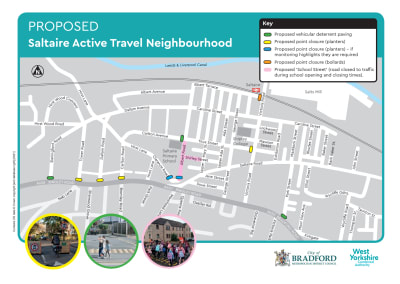
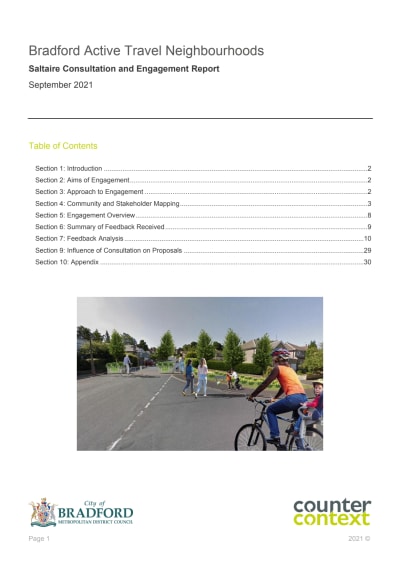
Introduction
The Saltaire Active Travel Neighbourhood (ATN) aims to make Saltaire a more pleasant, vibrant and safer area by limiting through-traffic, which can feel like it dominates the area, while still allowing residents, businesses and organisations to access their premises.
In July and August 2021 we undertook an initial consultation on the concept of an ATN which showed that 80% of 479 respondents felt positive about making Saltaire an ATN.
Having taken into account feedback and suggestions from this initial consultation period and from discussions with key stakeholders, such as emergency services and refuse collection, we are now proceeding with a six month trial of ATN measures.
Most of the measures installed will be temporary, so they can be removed should it be decided not to make the measures permanent beyond the trial period.
We will begin implementing the measures from Monday 11th July; the works are expected to last approximately four weeks.
During the trial period, feedback will be constantly monitored through our website, email address, freephone and freepost communication channels and interventions can be adjusted if any missed opportunities or major issues are highlighted to us.
After the six month trial, public feedback and traffic monitoring data will be reviewed and a decision will be taken on whether to retain, adjust or remove the ATN measures.
What measures will be introduced?
The measures to be introduced in Saltaire include;
Modal Filters/Point Closures
A modal filter is used to stop non-local traffic from driving through an area. Modal filters are typically planting boxes or bollards, that still allow pedestrians and cyclists to travel the full length of a road but prohibit a vehicle to pass. Vehicle access to each point on the road is still possible from either side of the modal filter.
During the trial period, planters would be used as modal filters as these are temporary measures which can easily be adjusted or removed.
As part of the trial, planters will be placed on the following roads:
- Tower Road
- Dallam Road
- Carlton Road
- Titus Street at the junction with Victoria Road
A modal filter in the form of a removable bollard in keeping with the heritage of Saltaire, will be positioned at the junction of Victoria Road with Albert Terrace.
If monitoring highlights that planters are required on Clarence Road and Albert Road, we will install these during the trial period.
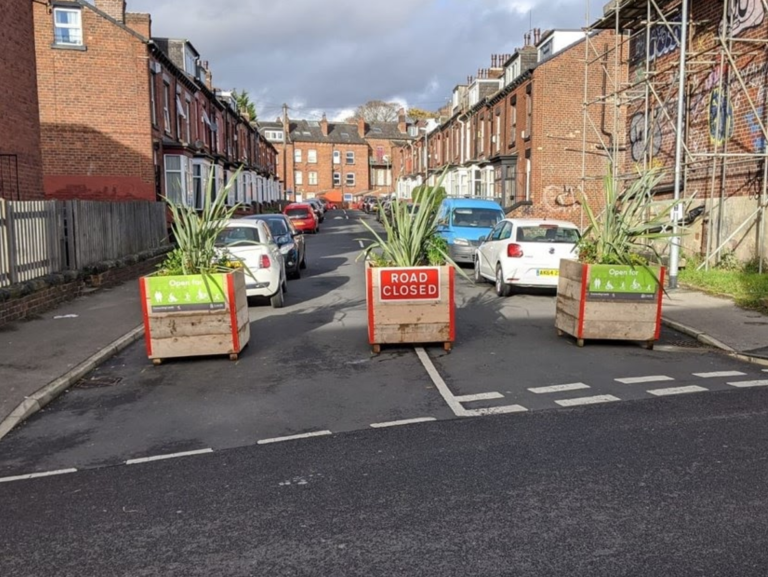
Bus Gates – no longer going ahead
We had previously proposed that two 'bus gates' would be part of the Active Travel Neighbourhood measures, one on Caroline Street and the other on Wycliffe Road.
As a result of public feedback on the bus gates, and a review of the scheme, it has been decided to remove the bus gates from the proposed measures. We believe the other measures contained in the proposals will significantly reduce through traffic on Caroline Street, removing the need for a bus gate, which would prevent local residents travelling through it.
It is anticipated that new powers will be available to Local Authorities later in the year that would allow us to exempt residents from bus gates, therefore we will reconsider this element of the scheme once central government has introduced these powers.
Vehicular Deterrent Paving
In three locations modal filters with planters are not feasible as refuse and emergency services need to access these streets. Therefore, vehicular deterrent paving is going to be introduced. Vehicular deterrent paving is a type of road surface that prevents private cars from driving over it, but still enables service vehicles, such as the emergency services and refuse lorries, to access the road. These are more permanent measures, however, if they are found to be unsuccessful at the end of the trial period they can be removed.
As part of the trial, vehicular deterrent paving will be placed on the following roads:
- Sleningford Road at the junction with Bingley Road
- Park Street at the junction with Bingley Road
- Carlton Avenue at the junction with Albert Road
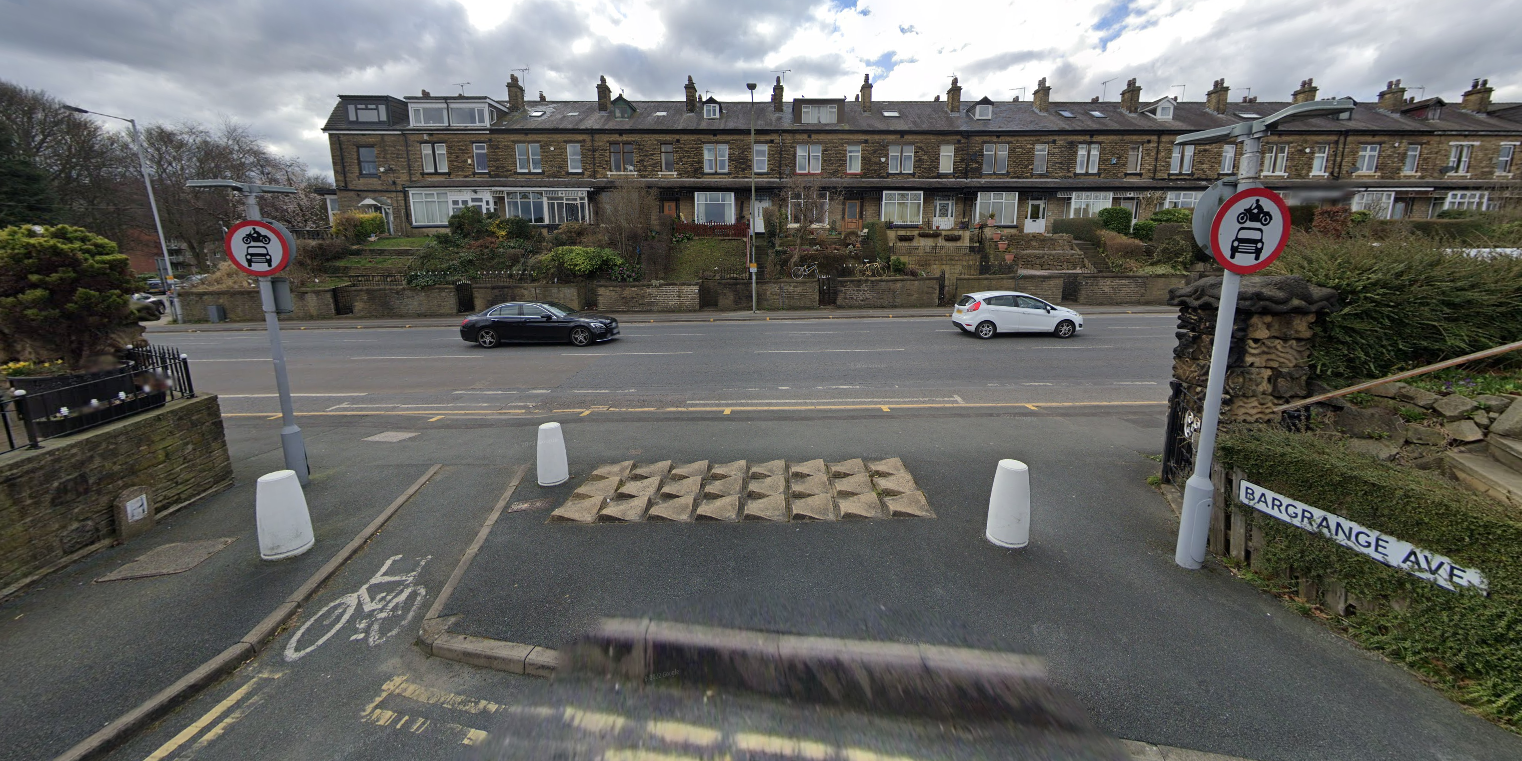
School Streets
A school street is a road outside a school with a temporary restriction on motorised traffic at school drop-off and pick-up times. The restriction applies to school traffic and through traffic. Residents of the road would be given a pass to let others know they are a resident and still be able to drive in and out of the road during the school streets hours.
Saltaire Primary School
The school street would cover Albert Road and half of Shirley Street between the hours of 8:15am-9:15am and 3-4pm. The school street would become effective from the start of the new academic year in September 2022.
Wycliffe Primary School
Bradford Council are currently in discussions with Wycliffe Primary School about a school street in the new academic year. If a school street is implemented for Wycliffe Primary, we will let parents and local residents know via a letter, as well as posting an update on our website.
The Saltaire ATN overview map which shows where each of the measures will be placed is below.
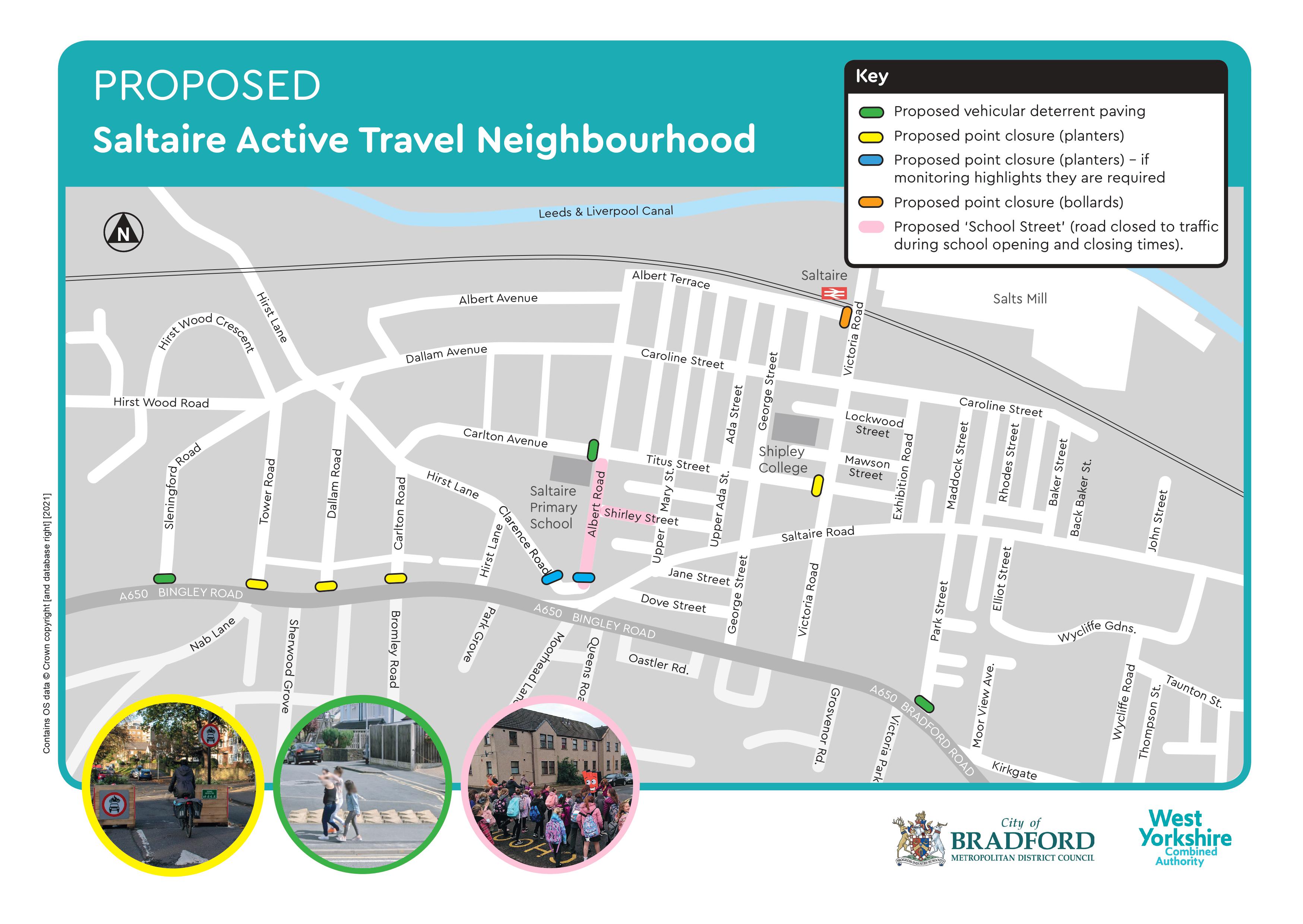
You can view a PDF of the above map and zoom in by visiting our documents library at the top of this page.
How have we decided on these measures?
In July 2021, we ran a first phase of consultation where we asked residents to feedback on the idea of an Active Travel Neighbourhood. We collected feedback and suggestions through an interactive heatmap of the area, along with taking feedback via email, freepost and freephone. Analysis of this feedback has helped to shape the measures which will be implemented on a trial basis.
The main concerns raised during the consultation which we have tried to address with the scheme are:
- Caroline Street and Titus Street being used as cut throughs to avoid congestion at the traffic lights on A650 Bingley Road and Saltaire Road;
- Goods vehicles disregarding the existing traffic restrictions on Slenningford Road, Tower Road, Dallam Road and Carlton Road;
- Abuse by non-local traffic of the Access Only order on Wycliffe Gardens. Measures here will be reconsidered when more powers are granted to local authorities by the government to enforce moving traffic offences through cameras;
- Vehicles using Park Street to travel between the A650 and Saltaire Road; and
- Vehicles using the Albert Terrace / Victoria Road junction which is not suitable for vehicular use.
Numerous options for the location of the modal filters have been considered to ensure that a feasible solution is implemented. The measures were refined in consultation with the refuse and emergency services to ensure that they can operate safely.
Next Steps
The majority of measures proposed for Saltaire will be implemented temporarily as part of a trial. They will be reviewed six months after their implementation, with a view to determining if they should be made permanent, adjusted or removed.
This review will take into account the feedback of local residents, along with traffic surveys on filtered roads and surrounding roads to see if there has been an impact on traffic flows or mode of travel.
Traffic volumes and speeds will be measured at 15 locations within and on the periphery of the ATN for a two week period prior to the implementation of the scheme. These surveys will be repeated three months and six months after implementation.
Air quality will also be constantly monitored at to assess if the scheme is having either a positive or negative effect on air quality on key surrounding roads. Air quality will be measured at:
- Bingley Road
- Saltaire Road
- Park Street
- Victoria Street
- Moorhead Lane
- Bradford Road
- Canal Road
- Otley Road
There will be a review of the measures three months into the trial period once people have had chance to adapt their travel habits. There is the possibility of adapting the locations of the planters within the ATN if it is found that the measures are having a significant adverse impact after installation.
Our contact details are below in the ‘Have your say’ section.
How will you decide if the measures are retained, adjusted or removed?
As the objective of the ATN is to improve the local environment for residents the key criteria for retention or removal will be based upon the opinion of the local residents. However, the decision will also take into traffic monitoring (flows and speeds) on filtered roads and surrounding roads to see if there has been an impact on traffic flows or mode of travel.
Have your say
Throughout the trial we will be constantly monitoring feedback on how people feel about the ATN in general, as well as specific measures to ensure they are in the optimal location. If you spot any missed opportunities or major issues with the measures, please let us know so that we can review it.
At the end of the six month trial, all public feedback and traffic monitoring surveys will be analysed and a decision will be taken on if the ATN will be made permanent, adjusted or removed.
There are a number of ways you can get involved:
- You can contact us by phone, by email or in writing to provide feedback, ask questions and request written materials.
- Email: info@activetravelbradford.co.uk
- Freephone: 0808 196 9119
- Write: Freepost BFD Highways
This engagement phase has finished

...
